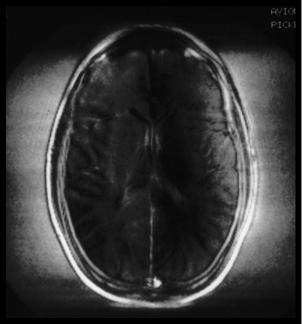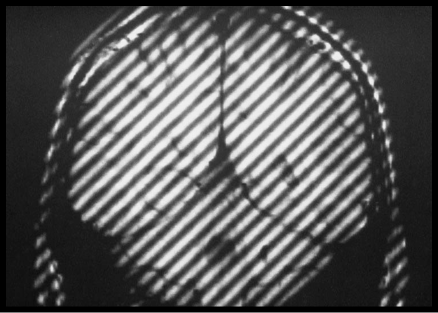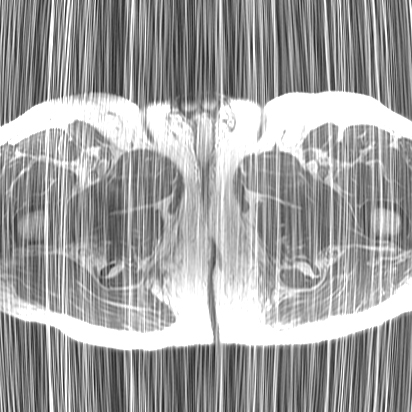 Central point artifact
Central point artifact
Central Point Artifact
The central point artifact appears as either a bright or a dark dot precisely at the center of the image. It results from a constant direct current (DC)-offset in the receiver electronics that when Fourier transformed becomes a small spike in the center of the image. In the early days of MR, this artifact was a common nuisance, even mimicking MS plaques. Today, however, it is rarely encountered because of the widespread use of RF-phase alternation and fully digital quadrature signal detection. If you have a 10-15 year old scanner with a partially analog receive chain, however, you may still occasionally encounter it.
The central point artifact appears as either a bright or a dark dot precisely at the center of the image. It results from a constant direct current (DC)-offset in the receiver electronics that when Fourier transformed becomes a small spike in the center of the image. In the early days of MR, this artifact was a common nuisance, even mimicking MS plaques. Today, however, it is rarely encountered because of the widespread use of RF-phase alternation and fully digital quadrature signal detection. If you have a 10-15 year old scanner with a partially analog receive chain, however, you may still occasionally encounter it.
|
Data Clipping
Improper calibration of the receiver amplifier gain can result in data clipping and an eerie, phantom-like image with a gray background. This artifact occurs whenever the gain setting is too high and the RF-signal exceeds the upper and lower cut-off levels of the RF amplifier (±Vmax). Careful recalibration and rescanning are the only means of overcoming this artifact.
|
|
Data Error Artifacts
From time-to-time a random "glitch" occurs in the data processing chain resulting in an image containing multiple lines that may be arrayed in a corduroy or herringbone pattern. A common cause is spike noise in the raw data, whose Fourier transform is a series of stripes. Sometimes simply reprocessing the raw data will remove this artifact and salvage an otherwise unreadable group of images.
|
Advanced Discussion (show/hide)»
The Fourier transform of a constant is the Dirac delta function δ(t), accounting for the central point artifact "spike".
Similarly, an erroneous data point at (kx, ky) accentuates a single spatial frequency, reflected by a set of parallel lines at that spatial frequency appearing in the final image.
References
Zhuo J, Gullapalli RP. AAPM/RSNA physics tutorial for residents. MR artifacts, safety, and quality control. Radiographics 2006;26:275-297.
Heiland S. From A as in aliasing to Z as in zipper: artifacts in MRI. Clin Neuroradiol 2008; 1:25-36.
Zhuo J, Gullapalli RP. AAPM/RSNA physics tutorial for residents. MR artifacts, safety, and quality control. Radiographics 2006;26:275-297.
Heiland S. From A as in aliasing to Z as in zipper: artifacts in MRI. Clin Neuroradiol 2008; 1:25-36.
Related Questions
We intermittently see zipper-like artifacts in our images. What causes them?
Why is receiver gain adjustment necessary? What happens if it is set incorrectly?
We intermittently see zipper-like artifacts in our images. What causes them?
Why is receiver gain adjustment necessary? What happens if it is set incorrectly?





